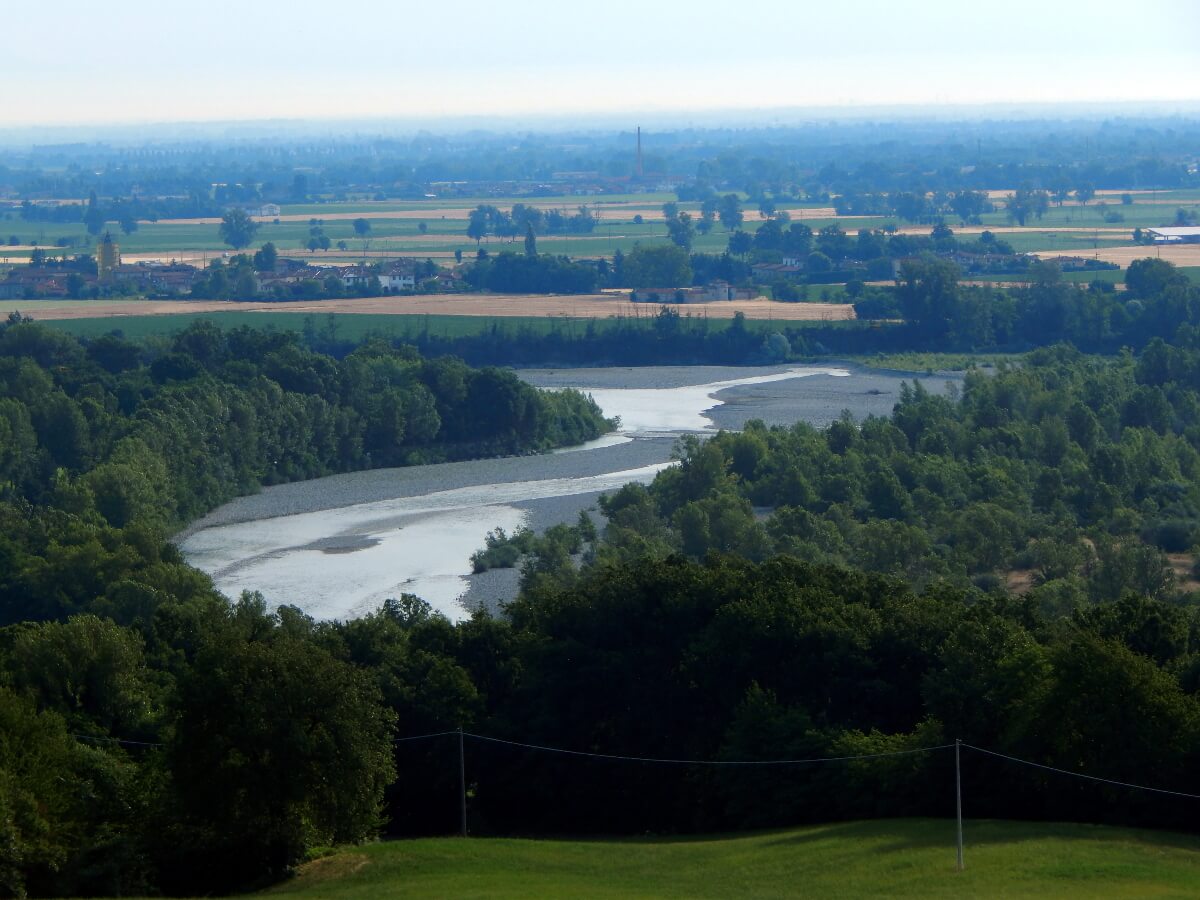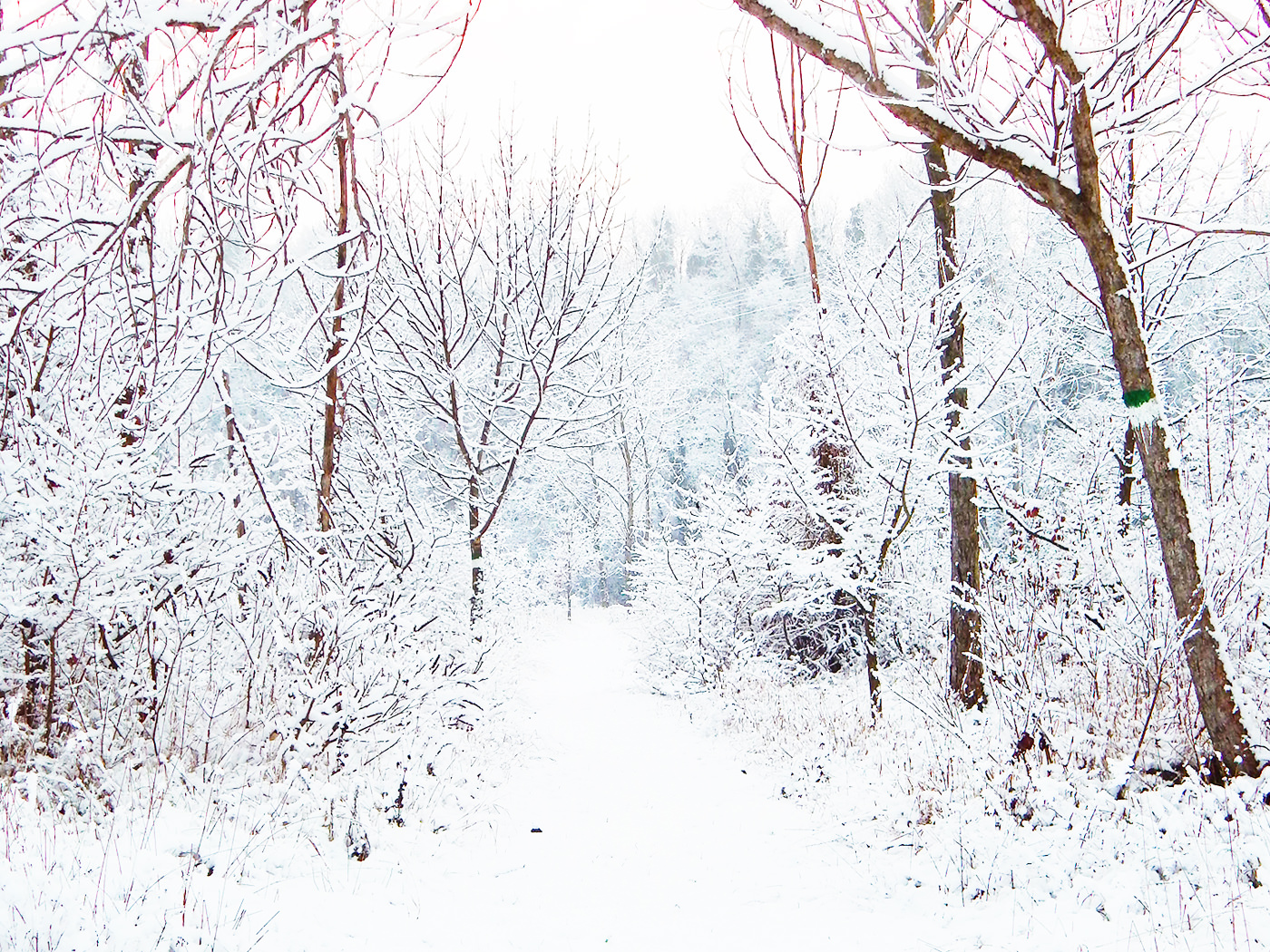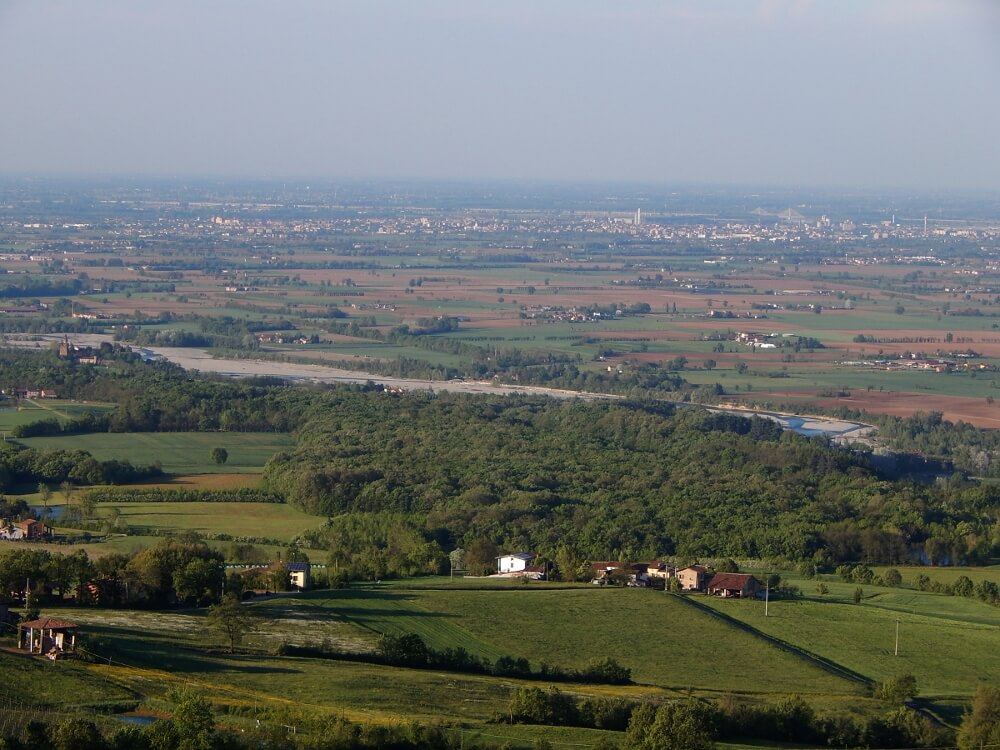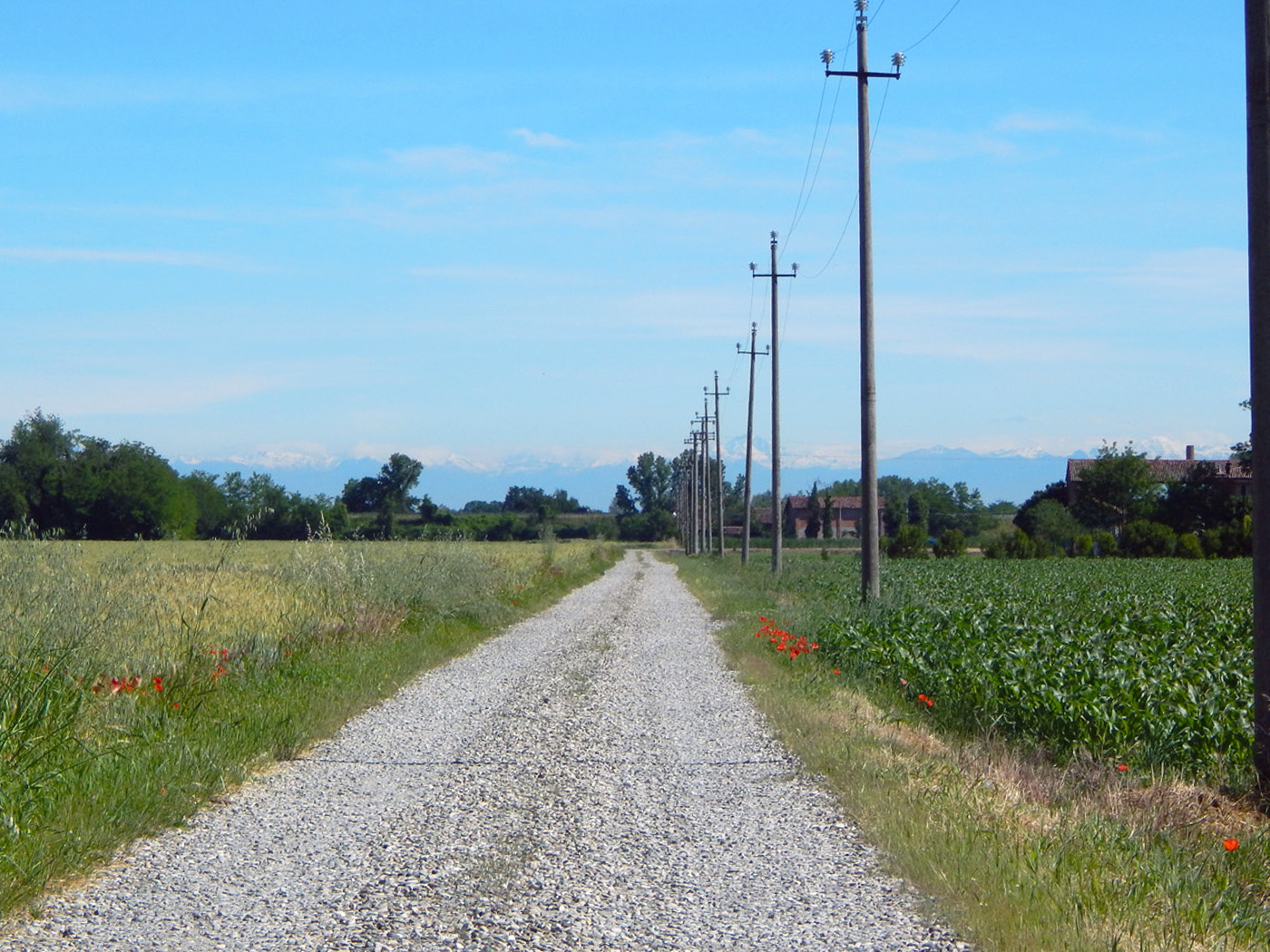
Trebbia river borns in the high Ligurian Apennines, from 1400 meters of Monte Prelà.
From here it flows meandering northward through the area of “Four Provinces”, passes the medieval village of Bobbio, so many castles and forts in the valley, until to widen in the large riverbed of pebbles on which stands the embankment of Rivalta.
At this point it begins the protected area from Fluvial Park, which it extends up to the affluence in Po, near Piacenza.
The visit paths, easily accessible by bicycle path, are particularly suited to activities of birding, hiking, biking and horse riding.
History
Hannibal

The river area now protected by the park was the site of the most famous battle fought in the territory of Piacenza: The first Battle of Trebbia.
The story is accurately described in the tales of the historians Polybius and Titus Livius in the context of Second Punic War.*
The legions of the Roman consul Publius Cornelius Scipio, returning from the disastrous defeat had on the banks of the Ticino, had failed to block the advance of the Carthaginians and took refuge precipitously toward the newly Cologne of Piacenza, where they joined the reinforcements of Tiberius Sempronius Longo.

For his part Hannibal, being able to count on the support of local Celtic people, sacked the Casteggio area to camp near the Trebbia, now at early winter.
In cold weather it was customary to stop the fighting, waiting for the melting of the snow, but Tiberius galvanized by a series of minor victories on the southern front and small raids on rebel Celts, he decided of not listening to Scipio and prepared the troops for battle.
So it was that on 18 December of 218 BC in a day of “cold and eceptional snow” it came into a direct conflict between the two armies, in the area between the villages of Rivalta, Gossolengo, Tuna and Ancarano.

Hannibal, protected on the bank of Rivalta Trebbia, forced the Romans to cross the river first. Then, keeping his to refresh themselves in the warm of the camp until the last moment, he attacked the opponents and shivering and fasting in the open field. Finally the cavalry of his brother Magone, hidden in the dense woods of the riverbed, caught them behind forcing to flee. **
* That is the second conflict in the centuries-old dispute between Carthage and Rome for the Mediterranean area domain.
** At the end of the battle only one of the famous 37 war Carthaginians elephants survived. It was Surus (Syrian) the subjective elephant of Hannibal, remembered in the statue of the “Tuna Bridge”.
Berengarius
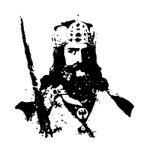
The Second Battle of Trebbia is at the begining of High Middle Ages (around 1000 years after Hannibal) when the death of Charlemagne decreed the establishment of the first Italian Kingdom, with Pavia capital. Despite this, the Franks weakened so much that the deposition of Charles the Big unleashed throughout the peninsula a tremendous succession struggle between local lords, the so-called Feudal Anarchy.
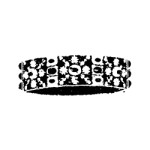
In this context Rivalta witnessed the battle on the banks of Trebbia the two major pretenders the crown: Berengarius of Friuli and Guido of Spoleto.
The battle took place again in winter, in early January, leading to disastrous defeat of Berengarius and the temporary consecration of Guido in King of Italy.

In the long term however this bloody episode did not produce peace and stability; Berengarius the same later became governor, sovereign and Emperor of the Kingdom, as far as to destroy the city of Pavia with the help of foreign mercenaries, before being assassinated and replaced by rival feudal lords. *
* Despite the unconventional political behavior and the continuous use of force, some nationalist renaissance and historical exponents will elevate Berengarius as precursor Unity of Italy, attributing patriotic spirit and rebellion that never showed in his rise to power.
The Way of Salt
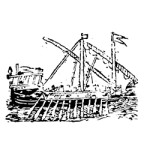
Territory of the “Four Provinces”, that is Apennine portion enclosed between the provinces of Genova, Piacenza, Alessandria and Pavia, took since ancient times a strategic importance for transit of goods, armies and pilgrims. *
Going along the southward Trebbia Valley meant reaching Genova, the most important port of Mediterranean, and the huge amount of goods that there came from all over the world: oil, wool, hides, leather, linen, hemp and the important salt for food preservation.
Over the centuries then was consolidated a system mule tracks and mountain passes under the direct control of the feudal guards and customs officers, known as “The Way of Salt”.
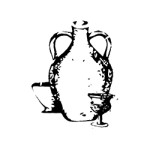
All this led guesthouses, inns, public sources and shops in passage centers, so Rivalta, halfway between the famous Ford of Sigeric on the River Po and the monastic center of Bobbio, developed commercial activities for travelers, becoming the true gateway to the valley.
*The connection between Po Valley and sea, the Postumia Way, had been one of the greatest achievements in the struggle against the Roman conquest of the Ligurian and Celtic populations, while the Francigena Way in medieval times had even joined the Central Europe to Rome.
Suvorov
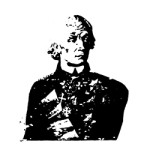
Further 1000 years separate the medievals stories from Third Battle of Trebbia, when the old Russian general Suvorov, war hero decayed, marginalized and placed under state surveillance because of heavy criticism addressed to the Tsar, was recalled for service and placed at the head of the second anti-French coalition.
Profiting of absence of Napoleon, stopped in Egypt by the destruction of his fleet, Suvorov descended into Italy, recruiting a large number of volunteers to challenge the occupation troops.

Immediately liberateded Milan he moved to the South, for cutting the road to the reinforcements of French general Macdonald near Casaliggio, once again on the Trebbia river.
Here three days of the battle caused twelve thousand victims; coalition was victorius and French were crushed to Genova losing dominion over the entire Northern Italy.*
*First clamorous successes were later marred by divisions, selfishness and internal rivalries, which the Russian leader had faced up to tactical retreat through the snowy Alps which earned him the title of “Very General”.
Hemingway

A sort of “modern legend” links the name of great American writer Ernest Hemingway the Trebbia waters.
It seems that during the passage of American troops in 1945, when the forty-five Hemingway at the peak of literary career roamed for Europe as a war correspondent, appeared in his journal the annotation: “Today I crossed the most beautiful valley in the world”
Even are handed down testimonies about a second trip by car, at conflict ended, for fishing trouts in the upper Trebbia and Aveto Valleys.
Sure is that the proverbial passion for fish and wine allowed the author to “Fiesta Mobile” to find along the banks river a bit of peace and serenity in the horribilis year of the capture of his son enlisted son, the divorce from his wife Martha, of umpteenth car accident and the appear of the first serious illnesses.
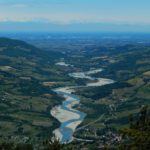
I fiumi erano per gli eserciti antichi degli ostacoli naturali spesso assai difficili da valicare, luoghi strategici, ideali per la difesa, e così pure il Fiume Trebbia
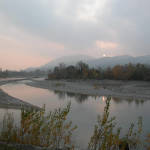
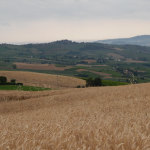
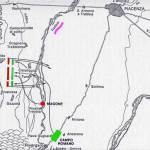
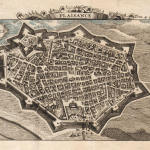
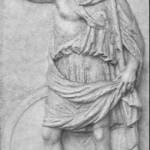
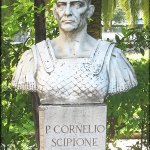
Publio Cornelio Scipione nel dicembre del 218 a.C.partecipò alla battaglia della Trebbia dove le forze romane, guidate dall'altro console Tiberio Sempronio Longo e da questi schierate nonostante il suo parere contrario, furono sconfitte.
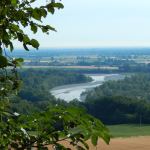
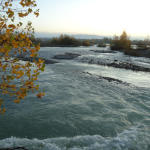
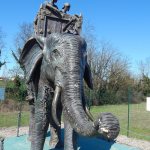
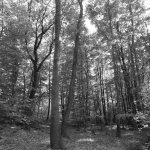
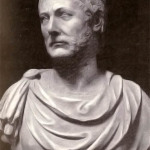
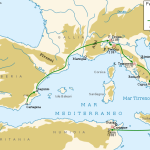
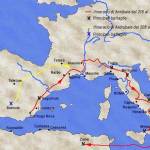
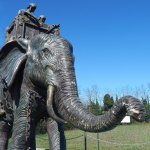
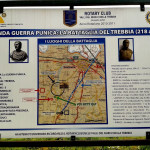
Targa presso Monumento ad Annibale

Berengario del Friuli ottenne la corona del regno d'Italia (888). Ma, sconfitto alla Trebbia (889) da Guido di Spoleto, non rinunciò formalmente al titolo regale frutto di una consacrazione vescovile che poteva essergli revocata solo con scomunica

Le Quattro Province [Alessandria-Genova-Pavia-Piacenza] sono sempre state zone di scambio e transito per commercianti, eserciti, pellegrini e viaggiatori, tra la Pianura Padana ed il Mare
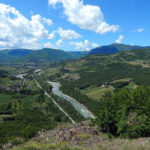
Percorrere la Val Trebbia verso Sud significava raggiungere Genova, il più importante porto del Mediterraneo, e l’enorme quantità di merci che vi giungevano da ogni parte del mondo: olio, lana, pelli, cuoio, lino, canapa e l’importantissimo sale per la conservazione degli alimenti

Le acque del Trebbia verso Sud

Il collegamento tra la Pianura Padana e il mare, la Via Postumia, era stato uno dei massimi traguardi nella lotta di conquista romana a danno delle popolazioni liguri e celtiche
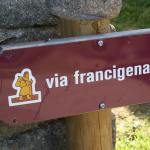
..mentre la Via Francigena, percorsa dai pellegrini in epoca medievale, aveva unito l’Europa centrale a Roma fino a Gerusalemme
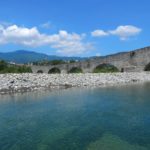
La Via degli Abati, o Via Francigena di montagna, è un cammino che metteva in comunicazione la città di Bobbio con Pavia, la capitale del Regno longobardo, e Roma
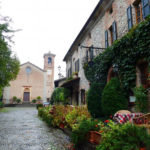
Tutto ciò portò foresterie, locande, fonti pubbliche e botteghe nei centri di passaggio, così Rivalta, a metà strada tra il famoso Guado di Sigerico sul fiume Po e il centro monastico di Bobbio, fiorì nello sviluppo di attività commerciali dedicate ai viaggiatori, diventando la vera e propria porta d’accesso alla valle
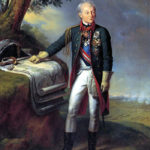
Gli Austro-Russi, nell'ambito delle guerre napoleoniche, sotto lo sguardo del 'generalissimo' Suvorov presente in prima persona, costrinsero i Francesi a riattraversare il fiume sbarrando il cammino nella Battaglia della Trebbia (1799)..
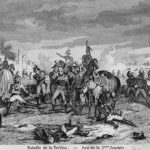
..tre giorni di battaglia causarono dodicimila vittime; gli Austro-Russi vinsero i Francesi (antica stampa, 'La sera del terzo giorno')
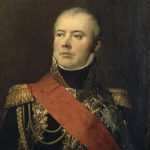
Rivalta subì l'ultimo saccheggio rilevante dai Francesi del generale Macdonald mentre erano in ritirata verso la Liguria
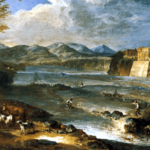
Gian Paolo Panini in 'Veduta di Rivalta dalla riva destra del fiume Trebbia'(1719) ritrae: il dongione danneggiato da un fulmine e oggi scapitozzato, la torretta d’angolo sulla Trebbia rimasta tale e quale, la nuova scarpata in cotto del 1711, successivamente ampliata a difesa del fiume e sullo sfondo il castello di Statto. Rivalta è una rocca che documenta la patria (Piacenza) del mattone e del coppo (ABI-Banca di Piacenza, Palazzo Galli)

E. Hemingway - Scrittore Giornalista statunitense (1899-1961)
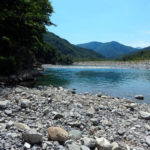
Una sorta di “leggenda moderna” lega il nome del grande scrittore americano Ernest Hemingway alle acque del Trebbia
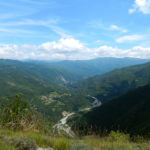
Pare infatti che durante il passaggio delle truppe americane nel 1945, quando il quarantacinquenne Hemingway all’apice della carriera letteraria vagava per l’europa come corrispondente di guerra, comparve sul suo diario l’annotazione:'Oggi ho attraversato la valle più bella del mondo'
Nature
Natural Resources
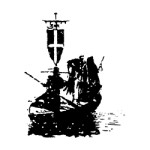
Trebbia river provided for centuries the population of Rivalta building material, firewood, fish and game, in addition to most precious resource of all: the water.
The numerous mills, branch canals, bridges and wells disseminated on the surrounding plain tell the story of a real “Water Civilization”, based on cultivation, on hydraulic engineering and transport of goods and passengers by ferry.
Even today in Rivalta it conveys the right and left Common Rio, you cross the only bridge in 20 Km, you extract optimum drinkable water from ground water, gravel for the construction industry, and you continue to cultivate corn, tomato, wheat and sugar beet due to the abundant waters of the river.
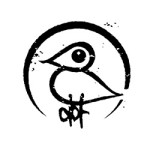
But it is precisely to prevent the exploitation of natural resources becoming excessive and adversely affect the river ecosystem that in the early 2000s was created Regional Park, in the hope that a greater appreciation and attention it preserves integrity and beauty, for coming years and generations to come.
Flora
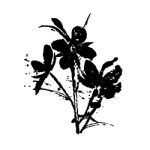
From the botanical point of view what makes it particularly interesting this part of river is the variety of habitat that it is encountered in a few meters of land and the presence of numerous “pioneer species”.*
Near Rivalta infact the riverbed of Trebbia abandons the typical tortuous Valley to expand into vast riverbed of pebbles variable path that characterizes it up to the turnout in the Po.
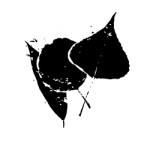
In warm soils, not very deep and frequently flooded like this can only live flowers as Carnation of Dodonaeus, small bushes of willow and little woods of Poplar.
Otherwise moving outwards vegetation differs between small forests of Black Alder, arid and semi-arid grasslands with Orchids, Grasses and Sedum, up to reach the great hardwood forests such as Croara.
* Particularly resistant plants that can grow on barren soil for the first and devoid of nutrients typical of burned forests, lava flows, collapsed areas or frequently flooded by water.
Fauna
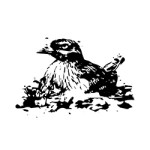
By connecting the Sea of Genoa to the banks of the Po, the path to the Trebbia is one of the major migratory routes for many species of birds that every year they move northward.
Ducks, Coots, Couriers, Terns, Fraticelli, Bee-eaters, Nightjar, Calandrelle, Sparrowhawks, Herons, Knights of Italy, Woodpecker, Kingfishers, Hoopoes and Stone Curlews* they are just a few of the birds that can be spotted in different seasons of the year.
Regarding mammals it is increasingly common to encounter Roe Deers and Eastern Cottontails, but it is easy to see the traces of Wild boars, Foxes, Muscardini and Porcupines.
At night you can watch the flight of two bats: the Vespertilio of Daubenton and that of Blyth, while in wetlands are Emerald Toads, Italian Tree Frogs, Dalmatian Frogs and Crested Newts.

Reptiles are represented by Water Snakes, Lizards, Green Lizards and Biacchi lastly fish such Barbs,Loach, Lasche, and Gudgeon found in calm waters, clear and well-oxygenated of river an ideal environment where reproduce. **
* Quite rare birds that use the mimetism of plumage and eggs to live and nest on the ground, among the stones of the riverbed. This species was chosen as the symbol of the regional park and appears in the logo.
** It is important to remember that in the entire park is forbidden both hunting and fishing. Beyond that it is prevented access to motor vehicles so as not to disturb the fauna and to avoid damage to nests, dens and delicate floral species.
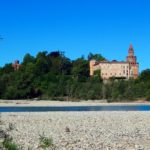
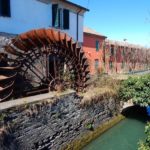
I numerosi mulini, canali di derivazione, ponti e pozzi disseminati su tutto il pianoro circostante narrano la storia di una vera e propria Civiltà dell’Acqua..
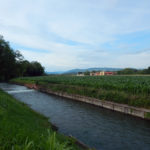
..basata sulla coltivazione, sull’ingegneria idraulica e sul trasporto di merci e persone tramite traghetto
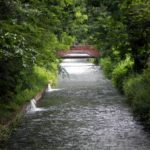
Ancora oggi a Rivalta si convoglia il Rio Comune di destra e quello di sinistra, la grande derivazione di acqua dal fiume Trebbia per irrigare la pianura
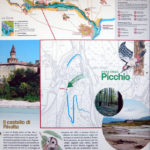
Il Parco Regionale Fluviale del Trebbia istituito nel 2009, ha il logo raffigurante l'Occhione, specie simbolo.
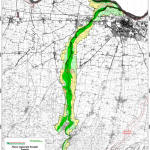
Comprende una superficie di 4000 ettari, dalle prime colline fino alla confluenza con il Po, a valle della città di Piacenza
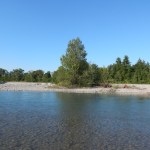
Il paesaggio è caratterizzato da ampie zone di greto del Fiume Trebbia che ha un'importante presenza di uccelli migratori
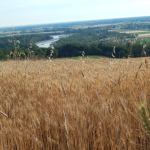
I terrazzi fluviali sono costituiti da praterie, arbusteti, colture agricole tradizionali e zone dove vengono praticate attività estrattive
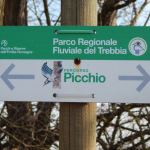
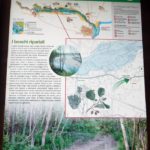
A valle di Rivalta uno dei boschi più conservati della pianura del Trebbia, un ontaneto ad ontano nero (Alnus glutinosa), il nome probabilmente deriva dal celtico -presso le rive-
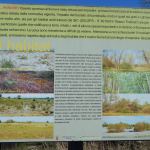
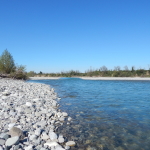
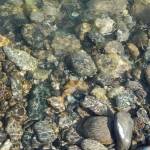
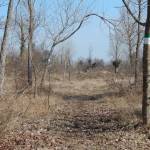
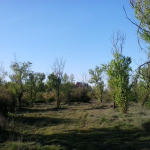
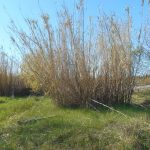
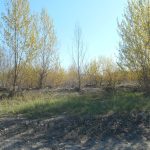
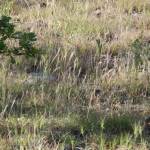
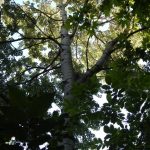
Pioppo bianco (Populus alba)
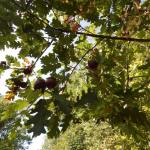
Roverella (Quercus pubescens)
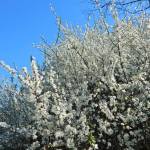
Biancospino (Crataegus monogyna)
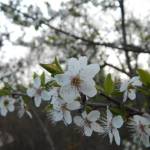
Pruno (Prunus)
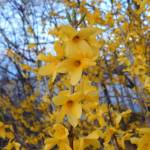
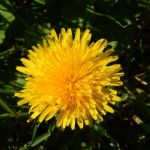
Dente di Leone (Taraxacum officinale)
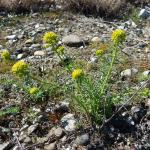
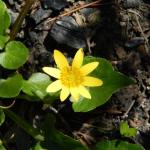
Favagello (Ranunculus ficaria)
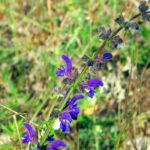
Salvia (Salvia Officinalis)
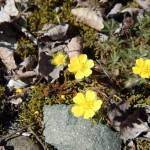
Heliantemum Nummularium (Specie Xerofile)
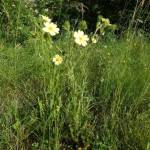
Heliantemum Nummularium (Specie Xerofile)
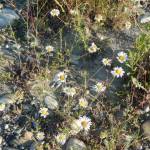
Margherita diploide (Leucanthemum vulgare)
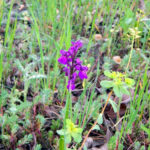
Orchide minore (Anacamptis morio)
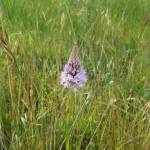
Orchidea Piramidale (Anacamptis pyramidalis)
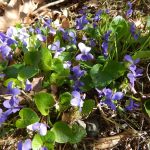
Viola mammola (Viola odorata)
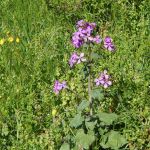
Violaciocca rossa (Matthiola incana)
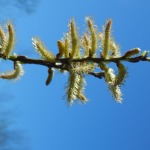
Fiori di Salice
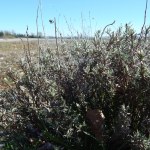
Praterie semiaride calcicole costituite in prevalenza da graminacee
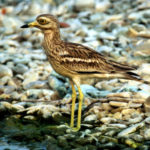
Occhione (Burhinus oedicnemus), l'area di conoide del Trebbia svolge un ruolo chiave nella conservazione dell’Occhione, specie simbolo del Parco, di importanza conservazionistica a livello europeo e nazionale. Foto di Angelo Battaglia
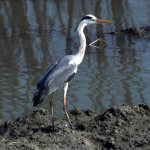
Airone cenerino (Ardea cinerea) (LIPU)
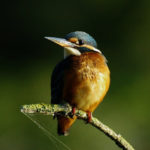
Martin pescatore (Alcedo atthis) Foto di Romano Romanini
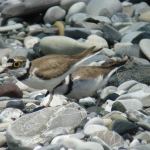
Corriere piccolo (Foto di Angelo Battaglia)
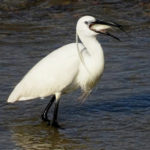
Garzetta (Egretta garzetta) Foto di Romano Romanini
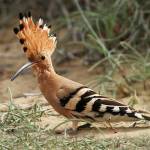
Upupa (Upupa epops)
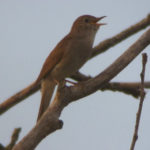
Usignolo (Luscinia megarhynchos) Foto di Romano Romanini
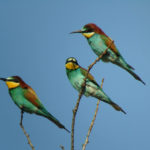
Gruccione (Merops apiaster) Foto di Angelo Battaglia
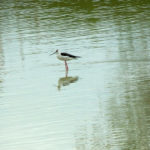
Cavaliere d'Italia (Himantopus himantopus)
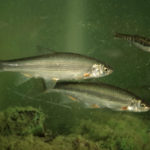
Lasca (Chondrostoma genei) Foto di Angelo Battaglia
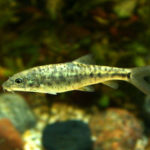
Barbo (Barbus barbus)
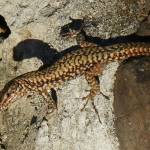
Lucertola campestre (Podarcis siculus)
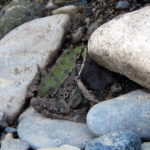
Rana (Pelophylax)
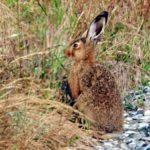
Lepre comune (Lepus europaeus)
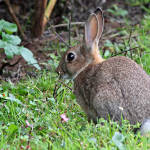
Coniglio selvatico (Oryctolagus cuniculus)
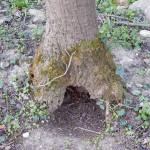
Tourism
Trekking

The banks of Trebbia are crossed by kilometers of country roads and paths preceding the institution of Park.
The revaluation of the area has created some short thematic tours, accompanied by signs with pictures and naturalistic information, which today allow to approach and observe the characteristic environments of the river floodplain.
Walking along quiet small country roads or immersing themselves for hours in a totally wild environment it is the precious opportunity that is offered to hikers and tourists fleeing the chaos of big cities.
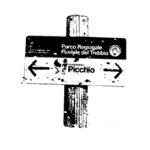
In Rivalta main access points* are in the lower parking of the village, the road leading up to the entrance arch and in Canneto, just to the right once you cross the Tuna bridge. The indications to follow are green and white, and marked with the logo of the park and the path name.
* It is important to follow the paths without abandoning them to avoid damage to nests, dens and delicate floral species.
Nordic walking
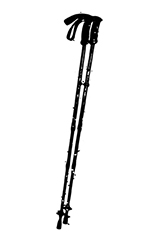
The flat area of the park and the variety of viable routes are features appreciated by many practitioners Nordic walking.
It is a type of walk which exploits the aid of special sticks for developing resistance, strength and muscle coordination; activity inexpensive, with zero environmental impact, suitable for anybody and at any time of year.
The access points and the paths* They are the same dedicated to walkers and cyclists.
* It is important to follow the paths without abandoning them to avoid damage to nests, dens and delicate floral species.
Bike
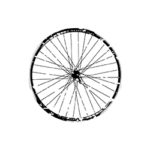
The park is a great attraction for both cyclotourists interested in paths on asphalt, both for mountain bikers experts in search of long dirt roads.
First find in Cycle lane of Trebbia a simple route, equipped, well-marked and connected to villages rich of services and historical testimonies. Infact it starts from the Piacenza railway station, through the squares, churches, palaces and streets of the old town, to continue on 16 km of bicycle path between the plains and fields of Gossolengo homes. When they reach the entrance of the Tuna Bridge you choose whether to cross towards Rivalta or conclude the path between the villages of Ca Buschi and Roveleto Landi, up to Rivergaro.
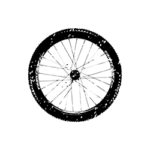
The wildlife lovers can instead venture into old cart tracks and paths* of the river area, exploring free an area between the meanders of the Montechiaro area, almost in Travo, and very far confluence into the Po, in San Nicolò. The Trails are marked and accompanied by information boards with many historical and environmental details.
* It is important to respect the paths not to abandon them to avoid damage to nests, dens and delicate floral species.
Birdwatching

Given the large amount and alternation of birds present in the various seasons of the year, birdwatching in Trebbia is particularly simple and satisfactory.
Need only a binocular and a good guide to start to recognize the most common species: Egrets, Knights of Italy, Herons, Mallards, Crows, Magpies, Gulls …
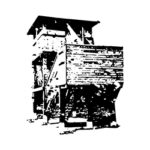
The help of experts and the experience then help to distinguish the song, verse, recognizing the shape of animals in flight or posing, have notions on behavior and biology, until you can spot the rarest exemplaries: Terns, Kingfisher, Nightjar, Calandrelle, Hoopoes and the famous Stone Curlew.
Encouraging a coming together to this relaxing and educational practice it was erected in the nearby park headquarters at La Rossia a covered watching tower*, overlooking an artificial lake frequented by various exemplary of ducks and waders.
* Access to the structure must be agreed with the administration of the Park.
Rides on horseback

A few kilometers beyond the village of Rivalta, along the road leading to the Wood of Croara and village of Travo, you meet the Farm Croara Vecchia: an old convent converted into a farm, B&B and horse center.
Here you can take part to horseback riding and carriage rides as well as follow the riding school of the beautiful riding stables on the banks of the Trebbia.
Sport fishing
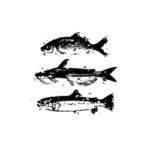
As recalled by the signs of the park, hunting and fishing are prohibited in the protected area.
Nevertheless, very close Tuna Lakes, right past the bridge coming from Piacenza, offer three reservoirs populated by Rainbow Trouts, Carps, Amur,American Piscescats, Carassi and Sturgeons.
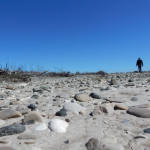
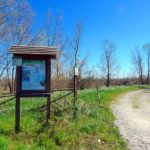
Il Percorso Orchidea
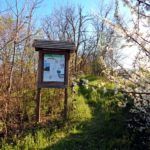
Il Percorso Picchio
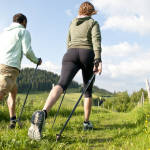
La camminata nordica
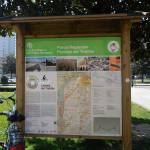
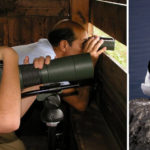
Il birdwatching è un'attività che può essere svolta in ogni stagione. (Foto Parchi del Ducato. A destra Sterne, Foto di Angelo Battaglia).
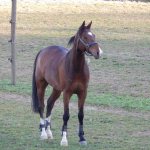
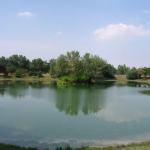
Map
Duchy’s Park
Management Authority for Parks and Biodiversity of Western EmiliaParks.it
The site of Italian’s ParksEmilia Romagna Tourism
Official Site of tourist informationCroara Vecchia Farm
Horse riding and horse rides in the ParkTuna Lakes
Sport fishing and restaurant in the Park
